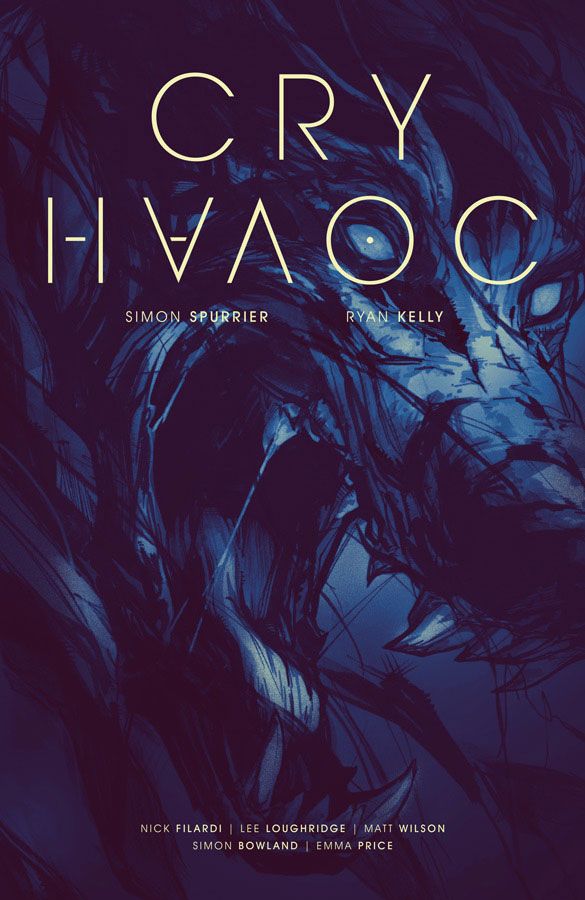Simon Spurrier and Ryan Kelly have put together a killer first issue with "Cry Havoc" #1. The story of Lou, musician-turned-werewolf-mercenary, is energetically drawn and tantalizingly structured, pulling the reader into a vibrant, violent world with plenty of mystery left over for issue #2. Spurrier's script jumps between three points in Lou's life -- her old life in London, her recent past in Afghanistan and her perilous present -- with colorists Nick Filardi, Lee Loughridge and Matt Wilson each taking on one of those eras. With this brilliant coloring scheme, Kelly's vigorous art and memorable, layered characters, "Cry Havoc" #1 has let slip a bold new world to explore.
Each colorist brings a unique, atmospheric palette to his environment, and the resulting distinctions between time periods not only make it easier for the reader but allow Spurrier to be more stylish with his captions and signposts. Wilson makes Lou's time in Afghanistan look dusty and confusing, with a palette of obscuring tans and browns that's only broken by splatters of color and harsh, yellow-white backgrounds. Kelly's lines look less solid and dependable in the muddle, reflecting Lou's disorientation. In contrast, in the present, Loughridge leans into the visceral, fearful "red" of the "red place," emphasizing and driving Kelly's darker, deeper linework. For Lou's London past, Filardi's electric blues walk that fine urban fantasy line: unexpected enough to set a supernatural mood, but just turquoise enough to still look hipster. Having these three different colorists doesn't only make the book more readable; it also highlights how much colorists can affect an issue's look and feel.
As always, Ryan Kelly's art is meaty and readable. From monstrous animals to Dalston clubs, his scenes are solid, vivid and dramatically framed; at points, they look like modern takes on the woodcut. With most artists, I have a personal preference for their more intimate panels or their showpiece work, but Kelly really finds the drama in both. There are one or two awkward framings in this issue, but overall he handles the diverse settings and subjects with ease.
For his part, Spurrier knows how to kick off a story. Lou's London past helps establish her as a person, the Afghanistan scenes ground her story in a larger conflict and the "red place" present provides an immediate problem that needs solving. It's very clever plotting for a series opener, and Spurrier doesn't let his jumping structure get away from him. The sections are split up well, and none drag. It could be a tough show to keep up, but it's strong and well-paced in this issue.
The characters are also kept interesting. Lou and her girlfriend's relationship is not a fairytale; it's given realistic weight and layers, with mundane spats about money and timeliness shown alongside mundane shows of love and support. In Afghanistan, Lou's fellow mercenaries are both cold and relatable, caught in a Faustian bargain.
However, the soldier Stig and his commanding officer are given exactly zero layers. From shouts of "Yyyeaaah!" and dialogue like "don't matter a peckerful" to racist rants about Afghanis, they're cutout composites of "bad soldier" tropes from fiction. Given the way the other characters are treated, this awkward almost-parody definitely stands out.
I was admittedly the target audience for a lesbian werewolf story with a Shakespearean title, but "Cry Havoc" #1 will leave readers so, so eager for issue #2. On the heels of this weekend's #ColoristAppreciationDay, this series also offers a brilliant example of how colorists enhance and shape comics.

